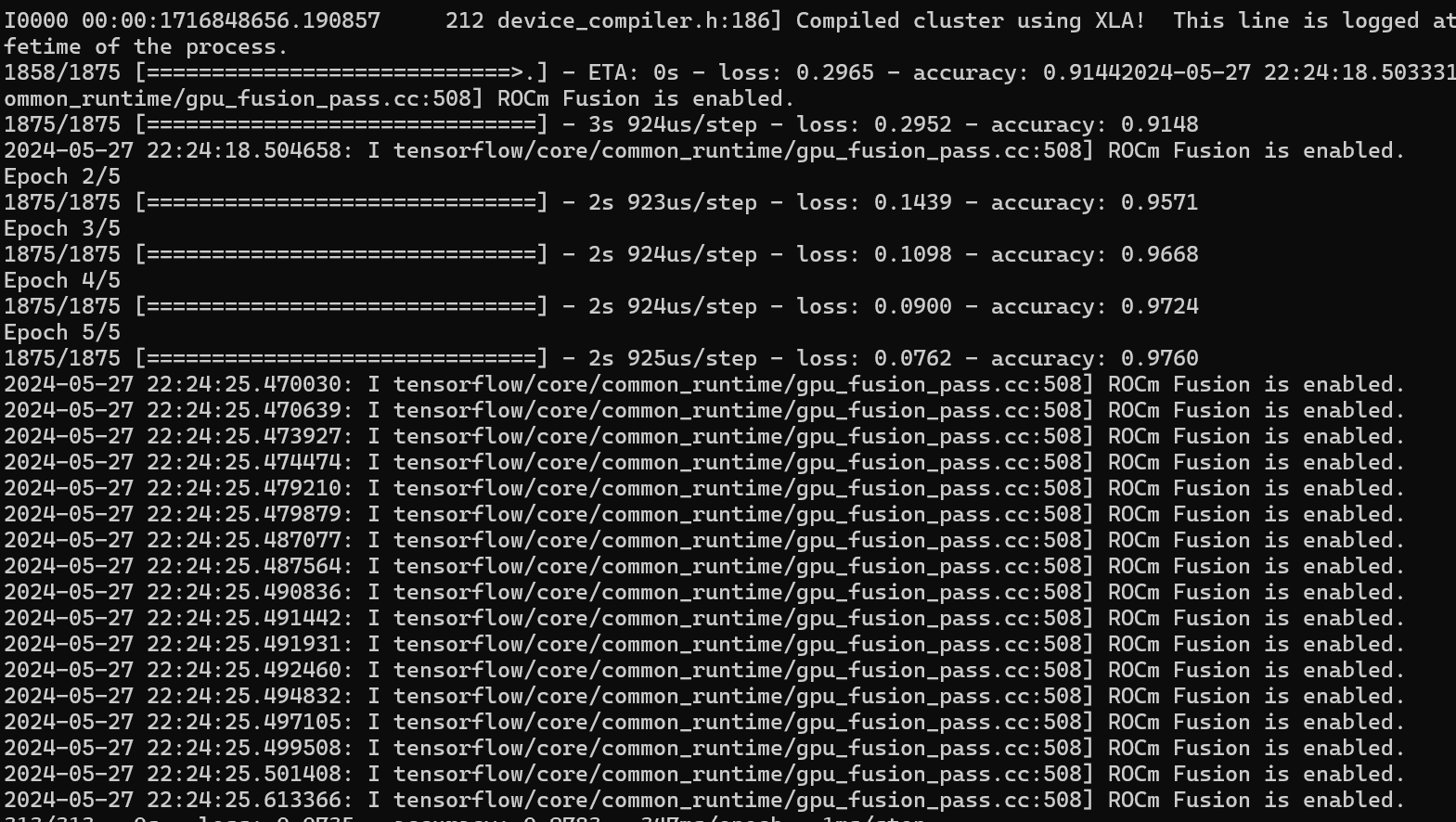Installing TensorFlow for ROCm#
2024-05-28
5 min read time
TensorFlow is an open-source library for solving machine learning, deep learning, and AI problems. It can solve many problems across different sectors and industries, but primarily focuses on neural network training and inference. It is one of the most popular and in-demand frameworks and is very active in open-source contribution and development.
Note
As of ROCm 6.1, tensorflow-rocm packages are found at https://repo.radeon.com/rocm/manylinux.
Prior to ROCm 6.1, packages were found at https://pypi.org/project/tensorflow-rocm.
ROCm version |
TensorFlow version |
|---|---|
6.1.x |
2.13.1, 2.14.0, 2.15.0 |
6.0.x |
2.12.1, 2.13.1, 2.14.0 |
Installing TensorFlow#
The following section describes TensorFlow installation options.
Using a prebuilt Docker image#
To install ROCm on bare metal, follow ROCm installation overview. The recommended option to get a TensorFlow environment is through Docker.
Using Docker provides portability and access to a prebuilt Docker image that has been rigorously tested within AMD. This can also save compilation time and should perform as tested and mitigate potential installation issues.
Follow these steps:
Pull the latest public TensorFlow Docker image.
docker pull rocm/tensorflow:latest
Once you have pulled the image, run it by using the command below:
docker run -it --network=host --device=/dev/kfd --device=/dev/dri \ --ipc=host --shm-size 16G --group-add video --cap-add=SYS_PTRACE \ --security-opt seccomp=unconfined rocm/tensorflow:latest
Using a wheels package#
To install TensorFlow using the wheels package, use the following command.
pip install --user tensorflow-rocm==[wheel-version] -f [repo] --upgrade
[wheel-version]is the TensorFlow version.[repo]ishttps://repo.radeon.com/rocm/manylinux/rocm-rel-X.Y/for versions 6.1 and later, whereX.Yindicates the ROCm version.
Note
For details on tensorflow-rocm wheels and ROCm version compatibility, refer to
ROCm/tensorflow-upstream.
Testing the TensorFlow installation#
To test the installation of TensorFlow, run the container as specified in Installing TensorFlow. Ensure you have access to the Python shell in the Docker container.
python -c 'import tensorflow' 2> /dev/null && echo ‘Success’ || echo ‘Failure’
Running a basic TensorFlow example#
To quickly validate your TensorFlow environment, let’s run a basic TensorFlow example.
The MNIST dataset is a collection of handwritten digits that may be used to train a Convolutional Neural Network (CNN) for handwriting recognition. This dataset is included with your TensorFlow installation.
Run the following sample code to load the MNIST dataset, then train and evaluate it.
import tensorflow as tf
print("TensorFlow version:", tf.__version__)
mnist = tf.keras.datasets.mnist
(x_train, y_train), (x_test, y_test) = mnist.load_data()
x_train, x_test = x_train / 255.0, x_test / 255.0
model = tf.keras.models.Sequential([
tf.keras.layers.Flatten(input_shape=(28, 28)),
tf.keras.layers.Dense(128, activation='relu'),
tf.keras.layers.Dropout(0.2),
tf.keras.layers.Dense(10)
])
predictions = model(x_train[:1]).numpy()
tf.nn.softmax(predictions).numpy()
loss_fn = tf.keras.losses.SparseCategoricalCrossentropy(from_logits=True)
loss_fn(y_train[:1], predictions).numpy()
model.compile(optimizer='adam',
loss=loss_fn,
metrics=['accuracy'])
model.fit(x_train, y_train, epochs=5)
model.evaluate(x_test, y_test, verbose=2)
If successful, you should see the following output indicating the image classifier is now trained to around 98% accuracy on this dataset.
